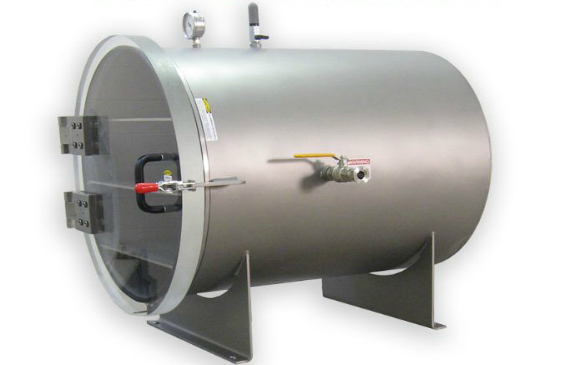
Industrial Vacuum Chambers: Improving Material Processing and Research Applications
Industrial vacuum chambers are essential tools used in a variety of manufacturing processes, materials research, and scientific experiments. These chambers create a controlled, reduced-pressure environment, allowing processes such as degassing, drying and processing of materials under vacuum conditions. In this article, we will look at the different types of industrial vacuum chambers, their components, and their applications in various industries.
1. Vacuum chamber types:
-
{eleven}
-
Glove Lockers: Glove lockers feature built-in gloves and sealed openings, allowing operators to handle sensitive materials or perform tasks in a controlled chamber environment.
-
High Vacuum Chambers: High Vacuum Chambers are designed to achieve extremely low pressures and are often used in advanced research, semiconductor manufacturing, and aerospace applications.
Standard Vacuum Chambers: These chambers are usually made of stainless steel or acrylic and come in a variety of sizes for use with different materials and processes.
2. Vacuum chamber components:
-
Vacuum Pump: The vacuum pump creates a vacuum inside the chamber, removing air and other gases. Common types of vacuum pumps include rotary vane pumps, diaphragm pumps, and turbomolecular pumps.
-
Vacuum Gauge: A vacuum gauge measures the pressure inside the chamber, providing feedback on the level of vacuum reached during the process.
-
Sealing Mechanism: A reliable sealing mechanism ensures the chamber is sealed tightly, preventing air leakage and maintaining the desired vacuum level.
-
View Screens: View screens are transparent windows built into the camera that allow operators to visually inspect the interior and monitor processes.
3. Applications of vacuum chambers:
-
Degassing: Vacuum chambers are used to remove trapped gases and bubbles from materials such as resins, adhesives and silicone rubber, providing improved material properties and performance.
-
Drying: Vacuum drying accelerates the removal of moisture from materials without exposing them to high temperatures, maintaining their integrity and reducing drying time.
-
Coating: Vacuum chambers are used in thin film deposition processes such as physical vapor deposition (PVD) and chemical vapor deposition (CVD) to apply coatings to substrates with precise thickness control and composition.
-
Materials Testing: Vacuum chambers facilitate materials testing and characterization under controlled environmental conditions, allowing researchers to study material properties, behavior and performance.
-
Space Simulation: Vacuum chambers simulate outer space conditions to test spacecraft components, satellite payloads, and astronaut equipment, ensuring their reliability and functionality in space missions.
4. Advances in Vacuum Chamber Technology:
-
Automation and Control: Modern vacuum chambers are equipped with advanced automation and control systems that provide programmable operation, data logging and remote monitoring.
-
Integration with other systems: Vacuum chambers can be integrated with other equipment, such as temperature controllers, scrubbers and mass spectrometers, for increased functionality and versatility.
-
Miniaturization and Portability: Compact and portable vacuum chambers are increasingly available for use in research laboratories, field testing and mobile operations.
Conclusion:
Industrial vacuum chambers are versatile tools that play a critical role in a variety of manufacturing processes, research applications and scientific experiments. Whether for degassing materials, drying components or simulating space conditions, vacuum chambers provide precise control of environmental parameters and enable innovative advances in materials science, electronics manufacturing and aerospace engineering. With ongoing developments in vacuum pumps, sealing techniques, and automation systems, industrial vacuum chambers continue to evolve to provide enhanced capabilities, efficiency, and reliability for a variety of industrial and scientific applications.






